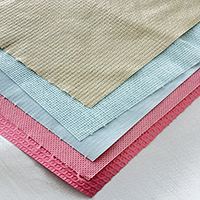
In the modern nonwovens industry, Spunlace Nonwoven and spunbond nonwovens are two common materials that differ significantly in their production processes, performance characteristics and application areas. Today, we will analyze the differences between these two types of nonwovens in depth and discuss their respective advantages and application scenarios.
Spunlace Nonwoven Fabric is a nonwoven material in which fibers are interwoven together by a high-pressure stream of water without the use of any adhesive. During its production, the water stream stretches the fiber bundles and twines them around each other to form a tightly structured fabric. This nonwoven fabric has high strength, good softness and breathability, and is widely used in the fields of medical treatment, sanitary products and filtration materials.

Spunbond Nonwoven Fabric (Spunbond Nonwoven Fabric) is a type of nonwoven fabric produced by hot melt spinning technology. In this process, the polymer raw material is heated to a molten state and then extruded through a spinneret to form continuous fibers. These fibers are cooled down and formed into spunbond nonwoven fabrics either mechanically or by hot pressing. Spunbond nonwoven fabrics have high strength, abrasion resistance and good tear resistance, and are widely used in packaging, agriculture and construction.
